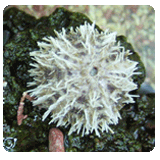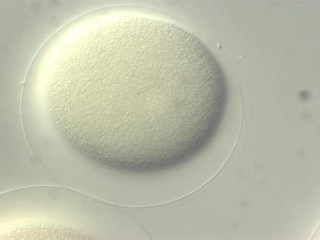Insight from the Sea Urchin
How a spiky invertebrate helps unlock secrets of genes, reproduction, and cancer
How a spiky invertebrate helps unlock secrets of genes, reproduction, and cancer
Sex, cancer, chromosomes, genes, cell division and development—the spiky, ocean-dwelling sea urchin has been pivotal in helping us understand all these biological basics. The story of the urchin’s role in research is one of monumental discoveries, visions of unseen phenomena, and scientists devoting themselves to answering the fundamental questions of life. It’s also a lovely illustration of how science progresses over time to expand our understanding of nature, with each successive discovery contributing to the next. All this, from a humble little sea critter that resembles a scrub brush.
Though urchins inhabit ocean waters all around the globe, and their eggs are eaten in many parts of the world, their use in biological experiments began by chance.
The era of modern biology started in the 1870s, when scientists realized that organisms are composed of cells. Improvements in microscopes were also letting researchers see new things. At the time, German scientists led the way in biological research and established a station for studying marine organisms near Naples, Italy. Needing samples to study, they plumbed the local waters. When they noticed fishermen dining on urchin eggs, biologists brought the eggs back to their labs.
Under the microscope, scientists found cells so transparent they could easily see what was happening inside them. That quality, along with the incredible abundance of eggs from just one urchin, made the sea creature a lab favorite. And as researchers watched the see-through eggs, they witnessed profound events still of interest to scientists today.
Though urchins inhabit ocean waters all around the globe, and their eggs are eaten in many parts of the world, their use in biological experiments began by chance.
The era of modern biology started in the 1870s, when scientists realized that organisms are composed of cells. Improvements in microscopes were also letting researchers see new things. At the time, German scientists led the way in biological research and established a station for studying marine organisms near Naples, Italy. Needing samples to study, they plumbed the local waters. When they noticed fishermen dining on urchin eggs, biologists brought the eggs back to their labs.
Under the microscope, scientists found cells so transparent they could easily see what was happening inside them. That quality, along with the incredible abundance of eggs from just one urchin, made the sea creature a lab favorite. And as researchers watched the see-through eggs, they witnessed profound events still of interest to scientists today.





-
A few urchin facts
- With a potential lifespan of over 200 years, the red sea urchin is the longest-lived animal on earth.
- Sea urchin roe, called uni , is considered a delicacy in Japan, as are its reproductive organs.
- Urchins’ mouths are called Aristotle’s lanterns , after his description of their star-shaped arrangement of five plate-like teeth.
- Sea urchins may sometimes appear to be inanimate (or dead), but they can actually move rapidly across surfaces using their spines.
- Seashell collectors prize the bony sphere, or test , that forms the sea urchin’s shape.The test is comprised of five parts, which form a star at their junction on the underside, showing the urchin’s relation to the sea star.
The
aha
moment
When the urchin began its life in science, just 130 years ago, scientists couldn’t yet answer the question "where do babies come from?" They knew male sperm needed to enter a female’s body—but some thought a tiny human, or homunculus , lived in the sperm, waiting to grow once it was inside a female.
When the urchin began its life in science, just 130 years ago, scientists couldn’t yet answer the question "where do babies come from?" They knew male sperm needed to enter a female’s body—but some thought a tiny human, or homunculus , lived in the sperm, waiting to grow once it was inside a female.
Then, in 1875, German biologist Oskar Hertwig watched as an urchin sperm entered an urchin egg. The sperm nucleus then fused with the egg nucleus, triggering a chain of events that caused the cell to divide. This was it—
fertilization
. The beginning of a new organism. The
aha
moment. The long sought-after explanation of sexual reproduction.
The urchin’s unique contribution to this revelation was the transparency of its eggs. Hertwig could see the nucleus of the sperm, a darkish circle against the lighter background of the egg cell, grow when it entered the egg and move toward the egg’s nucleus. He watched as the two small circles met and slowly became one. Today, researchers still observe this activity, searching for clues to treat certain forms of infertility. In fact, many of the methods used in modern human fertility research can be traced back to early work done using urchins.
Next: Uncovering the role of chromosomes »
The urchin’s unique contribution to this revelation was the transparency of its eggs. Hertwig could see the nucleus of the sperm, a darkish circle against the lighter background of the egg cell, grow when it entered the egg and move toward the egg’s nucleus. He watched as the two small circles met and slowly became one. Today, researchers still observe this activity, searching for clues to treat certain forms of infertility. In fact, many of the methods used in modern human fertility research can be traced back to early work done using urchins.
Next: Uncovering the role of chromosomes »



